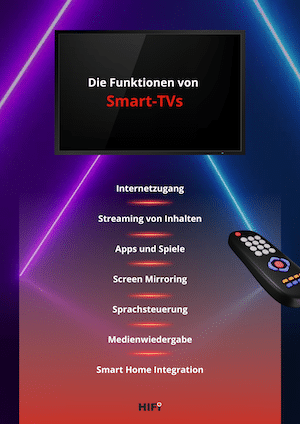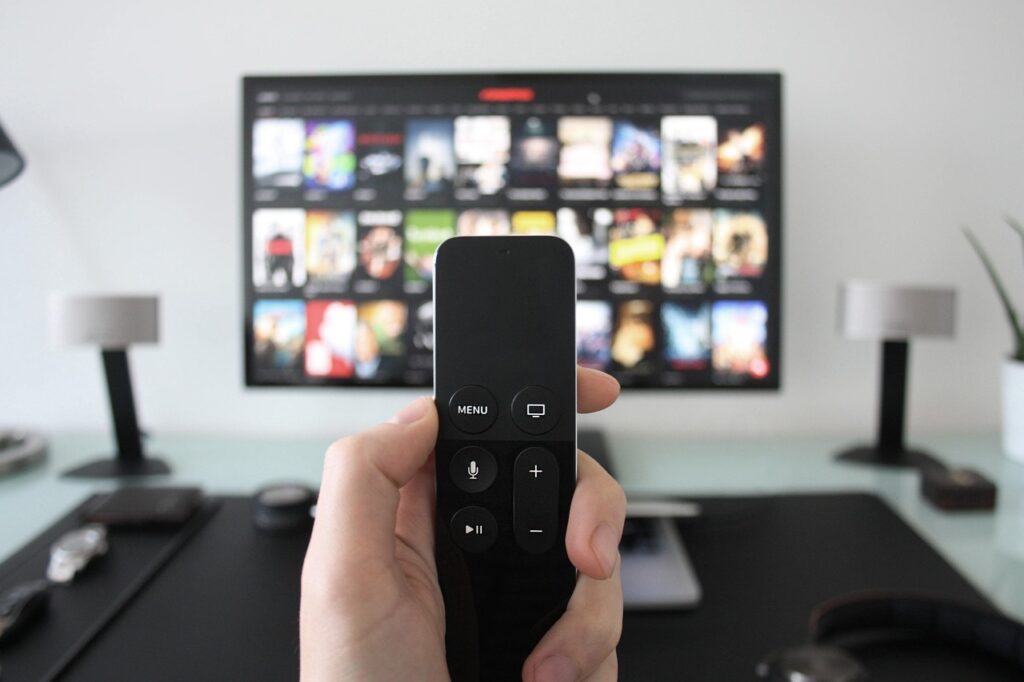Choosing a TV can be a confusing and overwhelming task as the market is flooded with a multitude of models, features and technologies. Today's televisions offer a wide range of options, making it difficult to find the ideal television for one's needs and preferences.
Contents
Pre-purchase considerations: What to look for when choosing a new TV
Finding a new TV can be a challenging task as the market is flooded with a multitude of models and features. To ensure you make the right choice, there are some important considerations to take into account before purchasing a new television.
First of all, the screen size is a crucial factor. It is important to choose the right size for the room where the TV will be placed. The viewing distance should play a role here. A large TV can be impressive, but placing it too close to the viewer can cause discomfort and detract from the viewing experience. A rule of thumb is that the viewing distance should be 1,5 to 2,5 times the screen diagonal to ensure a comfortable and immersive viewing experience.
Another important aspect is the image quality. The Resolution of the TV is a crucial factor in the sharpness and detail of the picture. Most TVs on the market these days offer at least one Full-HD-Resolution (1920 × 1080 pixel), but 4K TVs with a resolution of 3840 × 2160 pixels are becoming increasingly popular. A 4K TV offers a significantly higher pixel density and allows for an impressive level of detail. When choosing image quality, it is also advisable to pay attention to HDR (High Dynamic Range), since this technology offers a greater range of contrast and a wider range of colors, resulting in vivid and more realistic images.
Other considerations should also include connectivity, audio quality, smart TV capabilities, and TV design. One should be sure that the TV has sufficient HDMI- and USB ports to connect external devices.
So you should also pay attention to the audio quality of the TV and check if it has features like Dolby Atmos to offer an immersive sound experience. Smart TV features allow access to streaming services and online content, while TV design should take into account personal taste and the aesthetics of the room.
If you want to download games or apps to stream them on your TV, you can go to Find Google Play Store coupons and pay conveniently and securely.
Differences between LCD and LED screen technologies
LCD (Liquid Crystal Display) and LED (Light-Emitting Diode) are two of the most common display technologies used in many of today's televisions, monitors and mobile devices. Although both technologies are based on similar principles, there are some key differences between them.
LCD screens consist of a liquid crystal layer sandwiched between two panes of glass. Electrical voltage can be used to align the liquid crystals in such a way that light of different colors is allowed to pass through or is blocked. This creates the image on the screen. However, LCD screens require a backlight to make the image visible. This is where LED screens come in.
LED screens use a matrix of tiny light-emitting diodes as the backlight. Unlike traditional LCD screens that use fluorescent lamps, LEDs offer improved brightness, contrast ratios and energy efficiency. With precise backlight control, LED screens can also create locally darkened areas for deeper blacks and better picture quality. In addition, LED screens are typically thinner and lighter than LCD screens.
The advantages of Smart TVs and what you should know about them
Smart TVs have become increasingly popular in recent years and offer a variety of advantages over conventional televisions. A smart TV is basically a TV with built-in internet access and a variety of features beyond traditional TV programming.
A major benefit of smart TVs is that they allow users to access streaming services like Netflix, Amazon Prime Video, Hulu, and many others. This gives viewers the freedom to watch their favorite series, movies, and even live events anytime, anywhere, as long as an internet connection is available. These streaming services often offer a wide variety of high-quality content and allow users to customize their entertainment experiences.
Smart TVs also offer access to various apps and online platforms. The TV's App Store allows users to enhance their viewing experience with games, news apps, social media platforms and more. This opens up a world of possibilities for discovering content, interacting with others and turning the TV into a central entertainment hub.
However, it is important to note that using smart TVs also requires certain aspects to get the most out of them. A reliable internet connection is essential to access the various online features.
It is also advisable to take security measures such as updating the TV's firmware and using a secure Wi-Fi network to minimize potential security risks.

Conclusion: The way to the ideal television
Finding the ideal TV can be a daunting task given the multitude of options on the market. In order to find the right TV that suits personal needs and preferences, there are a few important factors to consider.
First of all, it is crucial that appropriate screen size to choose. This should take into account the available space in the room and the distance between the TV and the viewing area. A screen size that is too small can make it difficult to see details, while a TV that is too large can cause eye strain. Adhering to the screen size distance guidelines can ensure a comfortable viewing experience.
Furthermore, the resolution plays a crucial role in the image quality. A higher resolution allows for a sharper and more detailed image. While HD (high definition) is standard these days, investing in a 4K TV offers an even higher level of detail, especially on larger screens.
The refresh rate is another important aspect as it affects the fluidity of the movements. A higher refresh rate results in less blurry effects in fast-moving scenes.
In addition to the technical specifications, it is also advisable to pay attention to the connection options of the television. Sufficient HDMI and USB connections allow the Connection external devices like Blu-Rayplayers, game consoles or streaming devices. Smart TV features also provide access to various streaming services and online content. Overall, it is important to consider individual needs and preferences when choosing selection of the ideal television to consider. By paying attention to the right screen size, the right resolution, an appropriate refresh rate and sufficient connection options, a television can be found that offers an optimal viewing experience and meets personal requirements.

